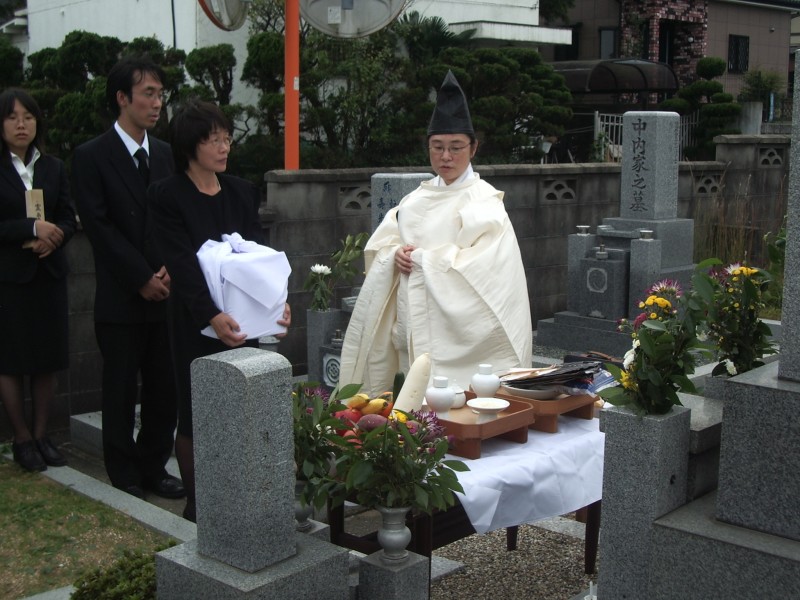Following the positive feedback to the posting about Hearn and the living dead, one or two readers have asked about funerals in Japan. One of the simplest overviews is given in William Penn’s The Expat’s Guide to Growing Old in Japan: What You Need to Know, from which the following extract is taken. It’s said that 90% of the population follow this kind of procedure, with exceptions being Christians, atheists and Shinto burials (see the series of postings on Shinto Way of Death). In recent years alternative forms, such as natural funerals, are on the increase, though still relatively rare.
*************
The basic traditional funeral
“While the somber and rigid customs of the traditional funeral are quickly being redefined by the changing times, there is still a prevailing, basic funeral format in Japan that one should be familiar with. When someone dies, there is an o-tsuya (wake), followed by a kokubetsu-shiki (funeral). It is acceptable to attend either the wake or funeral or both.
Books and magazines on funeral etiquette suggest suitable hair styles, makeup, attire, and behavior for the kokubetsu-shiki, which is considered the formal funeral service. Subdued is the operational word. Black clothes and stockings, toned-down makeup and hairstyle are recommended. Pearls are the only really acceptable jewelry. For men, etiquette dictates a dark suit, tie, socks and shoes or a black armband if a suit is not available.

A tomb in Okinawa with offerings scattered in front
A picture of the deceased is placed at the center of the Buddhist altar. (If one is something of a control freak, they might want to select and prepare their own photo ahead of time just for this occasion.) A tablet with the person’s new kaimyo Buddhist name written on it also will be displayed. In front of the altar, a table to offer incense is provided. As mourners pass by, they bow to those present before offering incense with their fingers. The number of times this is done is determined by what sect of Buddhism one belongs to, but it is likely that many attendees probably don’t know for sure themselves and just follow the lead of the person in front.
The body is displayed in a wooden casket (hitsugi). As the visitation comes to an end, funeral attendees may gaze at the deceased and place flowers or mementos into the coffin before it is ceremonially nailed shut. This is perhaps the most powerful and emotional moment of the kokubetsu-shiki.
Next, the body is taken to the crematorium. This is the part of the funeral that is usually attended by only family and close friends who are transported by rented bus or car to the crematorium. Those who are not going to the crematorium stand and bow until the hearse has pulled away. At the crematorium, the family witnesses the placement of the casket into the crematory.

Shinto burials are relatively rare
After this, they are guided to a private room where they are served tea and snacks of cookies and rice crackers. They sit and chat as they wait for the body to be cremated. This interval serves to give the family a few minutes of respite from the somber proceedings. Then, they are led to the door where the remains will be brought out and attendees use chopsticks to pick up the bones. This will be overseen by a funeral attendant who makes sure the bones are placed into the urn in the proper order.
The bones are not pulverized to ashes as they often are overseas. The ashes are taken home by the chief mourner and placed on the family’s Buddhist altar for 49 days until they are interred at a temple or other location.
The crematorium ceremony, a combination of utter realism and the bizarrely surreal, is often portrayed as almost ghoulish. On the contrary, at many of the funerals I have attended, there was a somber beauty in the fact that the loved one is not left behind but brought home to be with the family so they have a little longer to allow the gradual shock of separation to fade. Perhaps, one day even this moment of somber beauty may be seen as a fleeting tradition of the past. As society continues to alter the way it deals with death, even the concept of a funeral and ashes is changing.”

Leave a Reply